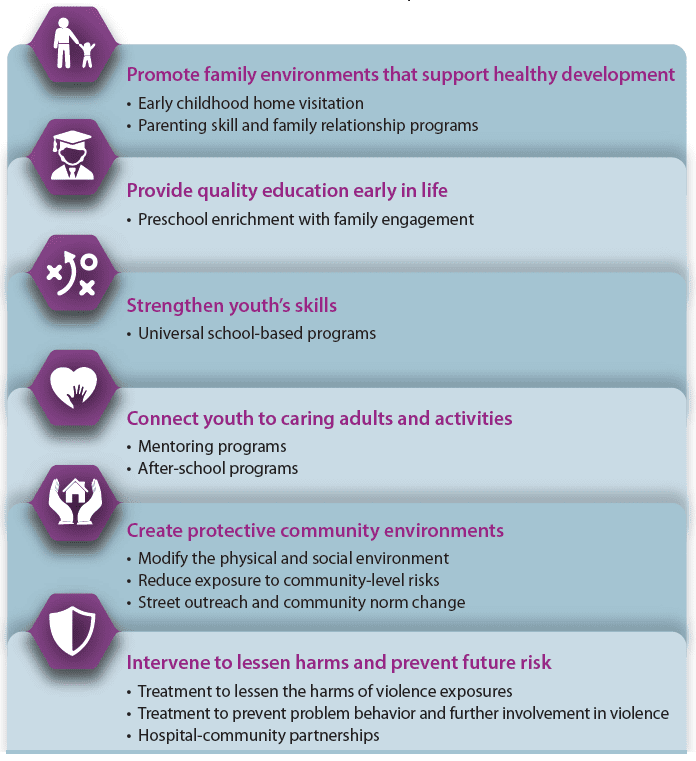Gang violence is a growing threat in many communities, leading to loss of life, damage to property, and fear and intimidation. However, there are ways communities can prevent gang violence. Ten ways include creating awareness, improving access to quality education, providing community services, offering employment opportunities, developing positive role models, addressing social inequalities, creating safe and clean environments, involving families and parents, working with law enforcement, and encouraging community unity. Implementing a multi-faceted approach that involves individuals, families, communities, and government agencies can help prevent gang violence and create safer neighborhoods.
Ten Ways for Communities to Prevent Gang Violence
Gang violence has become a serious issue in many communities across the globe, posing a significant threat to public safety. Gang violence can lead to loss of lives, property damage, and cause fear and intimidation within neighborhoods. However, there are ways communities can prevent gang violence from affecting their residents. Here are ten ways communities can prevent gang violence:
1. Create Awareness about Gang Violence
One way communities can prevent gang violence is by creating awareness about the issue. Community leaders, schools, and parents should educate people about the dangers of gang violence, how it operates, and how it can be prevented. Community members should also know how to report suspected gang activities to law enforcement agencies.
2. Improve Access to Quality Education
Studies have shown that access to quality education can significantly decrease the chances of young people getting involved in gang activities. Communities should strive to provide children with quality education facilities, programs, and resources to keep them engaged and motivated. This will keep children focused on their studies and less likely to be lured into gang activities.
3. Provide Community Services
Creating access to community services can also go a long way in preventing gang violence. After-school programs, recreational centers, and community centers provide young people with a safe environment to engage in positive activities. This helps them stay away from gang activities and provides them with opportunities to develop interests, skills, and relationships outside of gang life.
4. Provide Employment Opportunities
Many young people are drawn to gang activities out of a need for financial resources. Communities can prevent gang violence by providing employment opportunities to their residents. This can be accomplished through the creation of vocational training programs, job fairs, and job placement services for young adults and other residents.
5. Develop Positive Role Models
Having positive role models can help prevent gang violence in communities. Mentors, community leaders, and other positive influencers can serve as examples for young people, guiding them away from negative activities and towards positive ones. Community leaders should identify and prioritize the development of such individuals who can serve as positive role models for youth.
6. Address Social Inequalities
Social inequalities, such as economic disparities, racial segregation, and poverty, can increase the likelihood of gang violence. Communities should address these issues to prevent gang violence. This can be done through community development programs and initiatives, affordable housing programs, and job-training programs.
7. Create Safe and Clean Environments
Communities should strive to create safe and clean environments for their residents. This includes better lighting, safer streets, and public green spaces which promote a sense of pride and ownership. Clean and well-maintained neighborhoods discourage gang activities and improve the quality of life for all residents.
8. Involve Families and Parents
Getting families and parents involved in the fight against gang violence can be very effective. Parents should be encouraged to monitor their children’s activities and establish a strong connection with their schools and communities. Many community organizations offer parental training and support through outreach programs.
9. Work with Law Enforcement
Communities can also prevent gang violence by working with their local law enforcement agencies. Law enforcement officers can provide valuable resources such as training, intervention, and intelligence reports to help communities identify, monitor, and prevent gang activities.
10. Encourage Community Unity
Finally, communities should strive towards stimulating community unity. A united community empowers individuals and forms a cohesiveness that discourages gang activities. This can be achieved through community events, neighborhood associations, and forums which encourage the participation of all community members.
In conclusion, preventing gang violence can be challenging, but it is possible. Communities must take a multi-faceted approach that involves creating awareness, providing services, and developing positive role models. Reducing social inequalities, providing safe and clean environments, involving families, and working with law enforcement are other effective ways of preventing gang violence. It’s essential to remember that preventing gang violence is a collaborative effort that involves individuals, families, communities, and government agencies working together toward a common goal.
